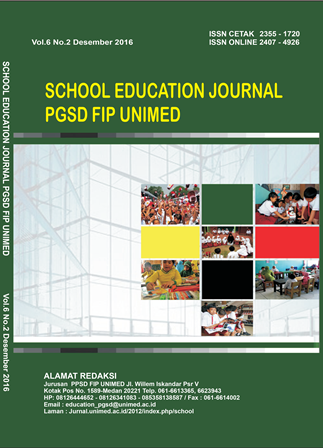APPLICATION OF THE METHOD OF INQUIRY TO IMPROVE THE ACTIVITY AND STUDENT LEARNING OUTCOMES IN CUBES AND BLOCKS OF MATTER IN CLASS V PRIMARY SD NEGERI 168432 TEBING TINGGI
DOI:
https://doi.org/10.24114/sejpgsd.v7i3.11252Abstract
The purpose of this research is to improve the activity and student learning outcomes in a cube of material and beam using in the method of inquiry. The subjects used in this study were students class V of SD Negeri 168432 Tebing Tinggi city, the number of 23 students. From the results of test that have been administered in the first cycle of action gained 14 students of the 23 students who have achieved mastery learning with classical completeness level equivalent to 30,43% or lower category. Because of the level of mastery learning classical is not reached, then procced to the second cycle. In the second cycle gained13 students from 23 students who have achieved mastery learning with classical completeness level equivalent to 56,52% or lower category. Because of the level of mastery learning classical is not reached, then procced to the three cycles. In the three cycles gained19 students from 23 students who have achieved mastery learning with classical completeness level equivalent to 82,61%, equivalent to a high category. In the three cycles has been no increase as expected.Key words : Application of the method of inquiry, Activity, Learning outcomesDownloads
Published
Issue
Section
License
Authors whose manuscripts are approved are approved as follows:
The publication rights for all journal manuscript materials published/published on the SEJ (School Education Journal) E-Journal site are held by the editorial board with the author's knowledge (moral rights remain with the manuscript authors).
The formal legal requirements for accessing this electronic digital journal article are subject to the terms of the Creative Commons Attribution-ShareAlike (CC BY) license, which means that E-Journal SEJ (School Education Journal) has the right to store, transfer media/format, manage in the form of a database, maintain, and publish articles without asking permission from the author as long as the author's name remains as the copyright owner.
Manuscripts published/published electronically are open access for educational, research, and library purposes.

